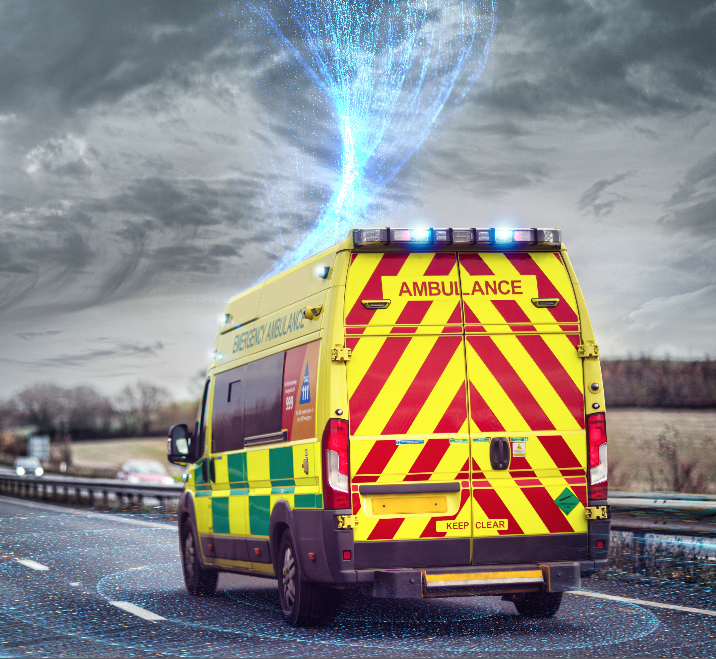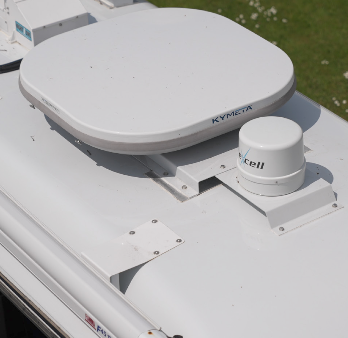Maintaining a reliable and high-quality internet connection is critical, not only for emergency service vehicles such as ambulances, fire appliances, CCTV vans and incident command units, but also for a myriad of applications across various industries.
Recent advancements in cellular and satellite technologies have become instrumental in overcoming communication challenges for those who require seamless access to vital information, regardless of their location – whether stationary or on the move.
In mobile scenarios, a hybrid approach utilising multiple networks ensures consistent connectivity as vehicles and remote teams move through different geographical areas with varying network availability.
In this blog, we explore these advanced technologies.
The Hybrid Edge Appliance: Intelligent connectivity for dynamic environments
One of the most significant breakthroughs in addressing connection issues is the Hybrid Edge Appliance. Unlike other hybrid connectivity routers that only switch between networks, Excelerate’s Hybrid Edge Appliance leverages all available cellular and satellite connections and bonds them together for maximum performance and coverage. Data is compressed and optimised for even faster transmission overcoming delays and packet-loss that can occur when operating remotely.
The solution is currently being trialled by East of England Ambulance Service as part of the Hybrid Connex Programme and has shown positive early results.

Excell Cellular Optimisation Antenna: Providing critical resilience
In the search for more reliable connectivity, many of our customers utilise an Excell Antenna. Excell can be deployed on a tripod or mounted on the roof of a vehicle and features both directional and omni-directional antennas. This means that it not only searches for nearby masts but can also focus its energy on powering the signal towards the mast. This precision results in a stronger and more stable connection enabling users to send and receive crucial data with unparalleled efficiency.

Excell is a popular choice among our customers and is currently in use across a wide range of applications that require high data transfer rates, such as video streaming, large file uploads, or real-time communication.
South Wales Police utilise Excell on board their CCTV vans, where the heightened speed and performance have proven essential for streaming live footage back to officers on or off site from the diverse landscapes which they operate in. Discover more here>
Satellite Communications: Seamless connectivity, anywhere
While cellular technologies play a crucial role in providing on-the-go connectivity, there are instances when terrestrial networks may fall short. This is where satellite communications step in as a reliable and effective solution, ensuring seamless connectivity regardless of the geographical challenges.
Satellites ensure that even in hard-to-reach places where terrestrial networks may fail, vehicles and teams can stay connected. This is especially important for emergency services that operate in unpredictable environments where cellular networks may be unavailable or unreliable.

The world of satellite services is advancing quickly, with the introduction of new technologies like Low Earth Orbit (LEO) constellations. LEO satellites operate at low altitudes, reducing latency for real-time applications whilst enabling higher data transfer rates. In addition to advancements in satellite orbits, hardware solutions, such as flat-panel satellites like the Kymeta HAWK u8, represent a significant leap forward in satellite technology. These antennas don’t require mechanical components to point to a satellite, providing a consistently connected experience whether stationary or on the move.
Mobile units equipped by NHS Digital utilises a Kymeta u8 to address the fluctuating network availability in the areas that they operate. Discover more here>
Taking the hybrid approach: Creating a safer and more connected future
Although satellite is commonly used as a backup, it’s increasingly taking a more prominent role for many customers who incorporate it into a hybrid communications network. The integration of satellite communications with other advanced solutions, such as the Hybrid Edge Appliance and Excell Antenna, creates a comprehensive and robust connectivity ecosystem.
By leveraging these advanced solutions, the connectivity ecosystem becomes more resilient. This resilience is especially important for vehicles and teams operating in dynamic and challenging environments, as it ensures a continuous and stable connection to the best available network.

Hereford and Worcester, Shropshire and Hampshire and Isle of Wight Fire and Rescue illustrate real-world applications of this integrated approach by utilising a combination of satellite and cellular communication on their incident command units. This enhances their ability to communicate effectively at the scene, improving overall situational awareness and incident management.





